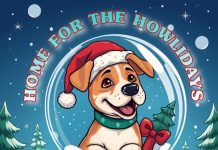
The U.S. Department of Agriculture (USDA) is investing $7 million to support the development of wetland mitigation banks for agricultural producers through the Wetland Mitigation Banking Program (WMBP). Through wetland mitigation banks, wetlands are restored, created or enhanced, generating credits that can be purchased by producers looking to compensate for unavoidable impacts to wetlands at another location. The funding is available to Tribes, government entities, nonprofits and other organizations.
“Wetlands provide important ecosystem services, like storing floodwaters and filtering pollutants, while also serving as critical habitat to wildlife,” said USDA’s Natural Resources Conservation Service (NRCS) Chief Terry Cosby. “Private landowners play an important role in restoring and protecting wetland health on working agricultural lands. The Wetland Mitigation Banking Program provides an alternative option to agricultural producers looking to compensate for impacts to wetlands on their lands.”
NRCS is accepting proposals for creating wetland mitigation banks through Grants.gov now through August 2, 2024. See the Notice of Funding Opportunity for details on eligibility and how to apply.
A webinar for applicants will take place on June 12 from 12-1pm ET. See the WMBP website for more information.





Wetlands are the number 1, biggest methane emitter in the world and they are growing in size. There cannot be any action taken in regards to climate change policy unless wetlands are actually reduced.
You simply cannot allow the biggest methane emitter in the world to continually get larger. Any manmade contributions in regards to methane are minuscule to the methane put out by wetlands. Increased rainfall events led by added water vapor in the atmosphere since the last ice age will continually add to this dilemma. There should be action to drain first temporal wetlands to lessen their contribution.
Comments are closed.